When I received this pattern, I did not have a suitable
fabric in hand, but I wanted to get started just the same.
First up, the muslin.
These days I often start out with a practice run, mostly for fit. In
this particular case, I would highly recommend one because of the complicated construction. This is my kind of pattern – it takes more than a simple scan of the
pieces and directions to figure out how everything fits together. Also, there was a bit of grading to do, and I
wanted to make sure everything was going to fit together properly.
As I have mentioned, this dress is a vintage size 12/35”
bust. My first surprise was the finished
measurements: bust 35”, waist 25” – that
means that no ease is included. I initially
thought that I had made an error. But
after checking and re-checking, the numbers were not changing.
I recall learning in a class that seam
allowances on historical fashions were often tiny (as small as ¼”) to save precious fabric. I struck me as odd that women did not
bust seams wide open, until I thought about their foundation garments. Throw a corset on and your ribcage and waistline
is not able to expand very much, making those tiny little seam allowances safe
from tearing open after a deep breath.
I am not familiar, however, with a sleeved dress that is lacking an amount of ease through the bustline.
It is not completely clear from the illustration, but this design sits quite wide at the neckline (as I found out once I put the muslin on my dress form). It therefore makes sense that the piece would be drafted similar to a strapless gown. This design has a draped bodice that lays over a fitted shell or “lining.” That lining needs to fit snug to the body to create the proper draping and keep the bodice from falling down. Another brilliant design feature from Ceil Chapman!
First mystery solved!

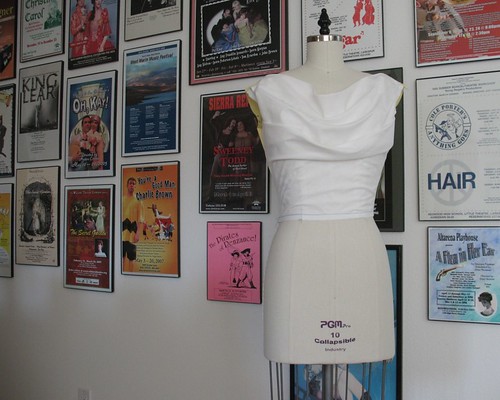


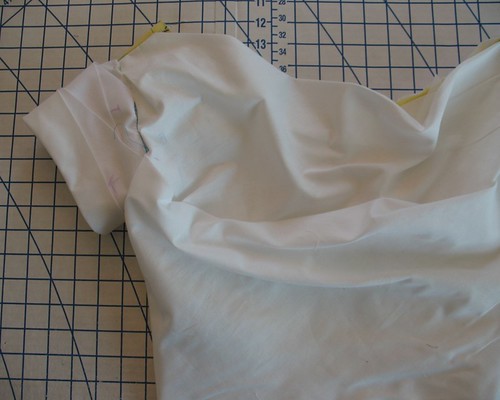
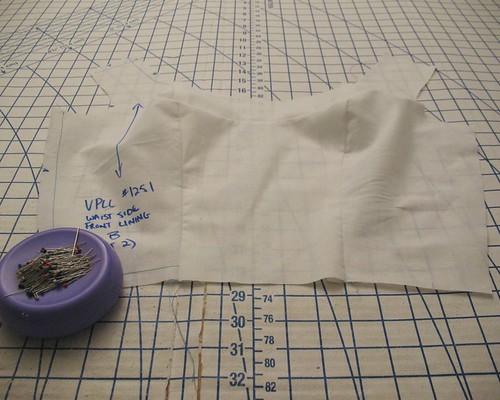
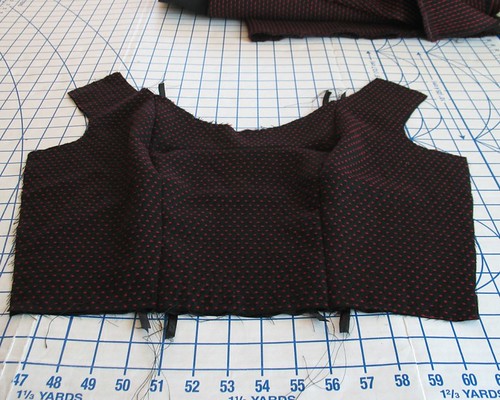
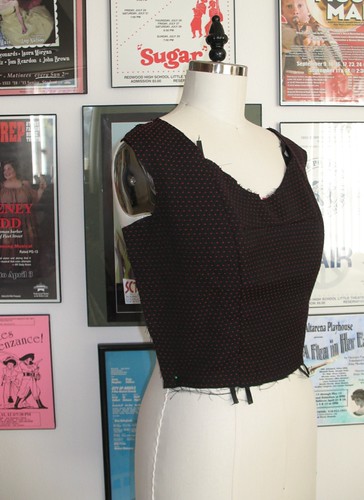
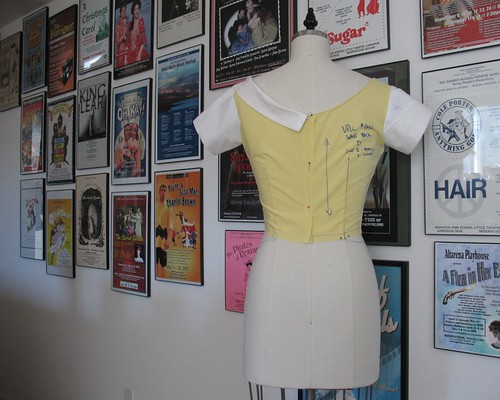
Looking grand!
ReplyDeleteWow, this is going to be gorgeous! The zero ease issue sounds uncomfortable, but I suppose you get used to undergarments like that, especially with special dresses!
ReplyDeleteYes! The importance of the right kind of undergarments cannot be overstated. Even with modern clothes, you cannot expect that a wasp-waisted dress is going to fit snugly and give an hourglass silhouette to a body shape that is straight-up-and-down all by itself. You need either a bit of padding or a bit of something that will nip in the waist just enough to give the right impression.
ReplyDeleteAlso, I'm loving this "detective work" of finding out why a garment is designed the way it is: that calculating 0 ease to the bodice has an actual function.
This was so helpful!!
ReplyDeleteI have just decided to join this year's 'Sew Fortnightly' from the blog 'Dreamstress' (dreamstress.blogspot.com) making a bodice is one of the next challenges!
Thank you!
Cassie
This is going to be a beautiful dress! Interesting information about the ease -- the choice of undergarments must have really been important to be able to fit into dresses like this.
ReplyDeleteInteresting note on tiny seam-allowances. I remember, years ago in India I had a top made for a saree and the tailor insisted on leaving all seam-allowances more than an inch wide after finishing because "everyone gained weight when getting older". That way you could adjust the seams to make the top fit through the years. Quite a different way of economical thinking, right?
ReplyDeleteI've noticed this too in old (pre 1900) clothing in places where corsets or other form-altering undergarments were not worn. The amount of raw edges seems also to have been minimized, possibly for ease of later altering or to save on the amount of thread that needed to be used so that, for example, a skirt would have been made from a rectangular piece (therefore having only two raw edges) that is then sewn onto a waistband with an appropriate amount of folds to fit the wearer's waist.
DeleteHello!
ReplyDeleteI have a quick question - how much ease in the waistline do you like to use/wear, particularly for fitted styles such as this? (I'm assuming you didn't opt for the 0 ease/corset option?) I never know how much to allow. Often I find that patterns seem to have too much ease for the suggested style. I'd be interested to know how much you think is "ideal/appropriate".
Thanks!